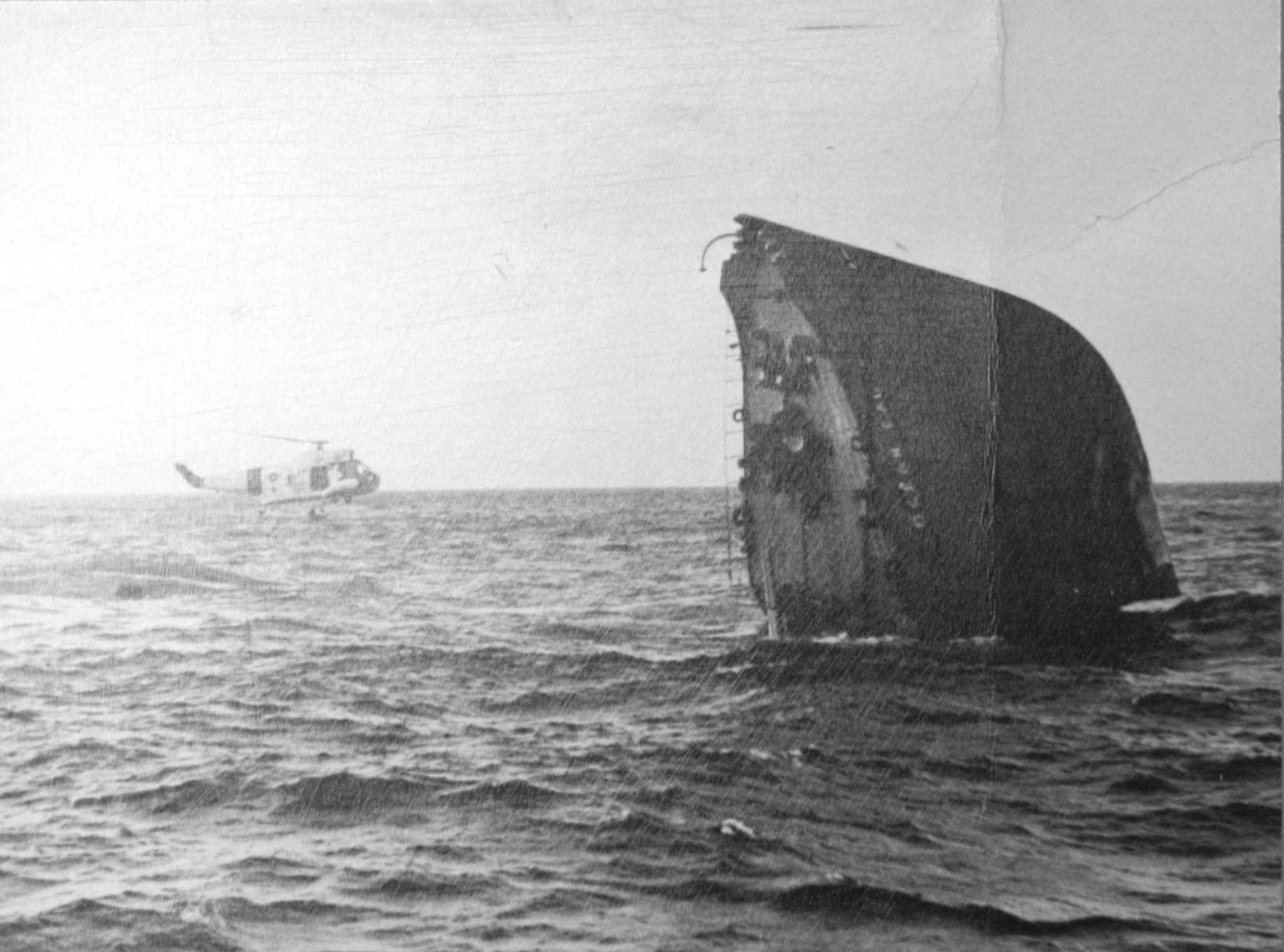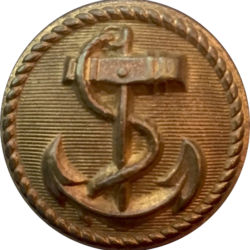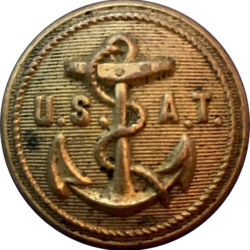Recently I came across a news item where the United States Navy once again redesigned its working uniform. Over the past decade, sailors complained they did not like the blue and purple or kelp green digital camouflage uniforms issued them by the fleet, nor did they appreciate having to change uniforms to and from work – Navy regulations forbade work uniforms being seen off-base although this directive has since loosened. The Navy cited the uniform’s unpopularity as a factor for the redesign, but the real impetus was that the uniform’s nylon-cotton blend in a fire “will burn robustly until completely consumed” – in other words: it melts into the skin. The new uniform is fire retardant and has the innovation that instead of buttons, it uses only velcro and zippers. The selling point of the latter is it is perfect for the flight deck since the uniform would not be a vector for the introduction of debris into aircraft engines. Buttons no more?
The button is such a commonplace item that it is taken for granted and paid not much attention. A button on a coat, shirt, or trousers is an ever-present – simple molded affair or complex construction. And yet despite being so small, the uniform button is often laden with symbolism endemic to the organization that wears it. In the American maritime profession, British traditions hold sway and along with them British forms and configuration of a uniform with the placement and design of buttons. Fortuitously. coupled with fabric and insignia construction, buttons offer an excellent means of identifying the context of uniforms and their period of manufacture. and in the context of this project, where a seaman figured within a ship’s hierarchy.
Below, please find my reference collection, as well as an interesting button collection at the American Merchant Marine Museum – the Dollar Lines button, is amazing. I have another page devoted to the buttons of United States Lines, here.
Do note: I am not a button collector by any stretch of the imagination, but I keep a collection of buttons to assist with identifying and dating uniforms and uniform items. Buttons are one of those items easily overlooked, yet understanding them provides a wealth of information.
united states navy
Many United States Navy buttons were manufactured in England; however, with the emigration of British artisans to New England, a button industry sprang up in Connecticut. Many of these early buttons were of sophisticated composition and had fine detail. The Waterbury button (NA-113) is a good example of this craftsmanship; some contracts were better than others, and for mass-market buttons, items such as NA-115 could be had (this came from the estate of an ex-American Mail Lines quartermaster). The plain anchor button of the Chief Petty Officer is often confused with that of a general nautical button; however, each of the examples presented shows the variation on a theme. With the re-design of the CPO reefer from eight to six buttons, buttons once exclusively worn by officers became standard for CPOs. The buttons marked a CPO and in nickel were worn by officer wardroom stewards; by the 1940s, the nickel buttons came to be replaced by white plastic buttons.
united states government marine
Included in the “Government Marine” section of my button collection is a U.S. Army Corps of Engineers button. This button came from a reefer worn by a member of the U.S. Army Corps of Engineers Dredge Fleet – these individuals were (and are) civilians in the employ of the Army who keep U.S. waterways passable. Among these buttons is the seldom-seen U.S. Maritime Commission (U.S. Maritime Service) button for both ship’s officers and stewards; this button has been all but forgotten, but reflects the close affinity of the nascent U.S. Maritime Service (USMS) with the U.S. Coast Guard (USCG). In 1941, the training mission of USMS was removed from the USCG and placed under the jurisdiction of the War Shipping Administration (WSA); I discuss the changes in USMS insignia here. The button of the United States Merchant Marine Academy (USMMA GO-26 and GO26-B) is a bit less straightforward and I will write about it at length at another date; suffice to say, the USMMA button became a “catch-all” maritime button, despite the existence of a such a button for that explicit use (see “Merchant Marine Generic, obverse” below). The USMMA “steward” button is a prime example of this shift.
united states merchant marine, schools, and organizations
Of interest is the “generic” Merchant Marine button; it was sold by Leopold Morse, Company which was an upscale Boston clothier that had also dabbled in uniforming Union officers during the United States Civil War. This button is fascinating as it illustrates the NOMMP button, which is a derivation of one of the oldest American nautical buttons – the New York Yacht Club. I have a selection of United States Lines (USL) button detailed here. Unlike this page, I analyze the timeline of USL button adoption and wear.
american merchant marine museum collection
The AMMM collection of maritime buttons has an absolute jewel in the form of the Dollar Steamship Line button. This entity was in existence from 1929 through 1938, and was ultimately seized by the United States Maritime Commission. What makes this button of particular interest is how a previous owner had made an effort to both pick out and file down the two pillars in the dollar symbol, thereby making it an S. Another button of interest is the C on a swallowtail. What makes this button interesting is how the designer (presumably) followed traditional heraldic tincture rules – the flag field would be green and the C would be on a white lozenge. If the rules were followed, it would not be the flag of W.R. Chamberlin.
References
Albert, Alphaeus H. (1977). Record of American Uniform & Historical Buttons 1775-1976. Bicentennial Edition. Hightstown: Alphaeus H. Albert.
This is the classic button reference. It shows most of the Armed Services. Government, and Merchant Marine issues. It is incorrect in attribution for many merchant marine buttons and lacks dates – but, at least it shows the major varieties (something is better than nothing).
McGuinn, William and Bazelow, Bruce S. (2006). American Military Button Makers and Dealers; Their Backmarks & Dates. McLean, Virginia: William McGuinn & Brice S. Bazelow.
A catalog of backmarks along with brief histories of manufacturers.
VanCourt, Don. (1998). Transportation Uniform Buttons, Vol. III: Maritime and Aviation. Madison, New Jersey: Don VanCourt.
The only reference on commercial maritime uniform buttons; the author uses McGuinn and Bazelow to assist in cross-referencing button dates.



















































































































































































